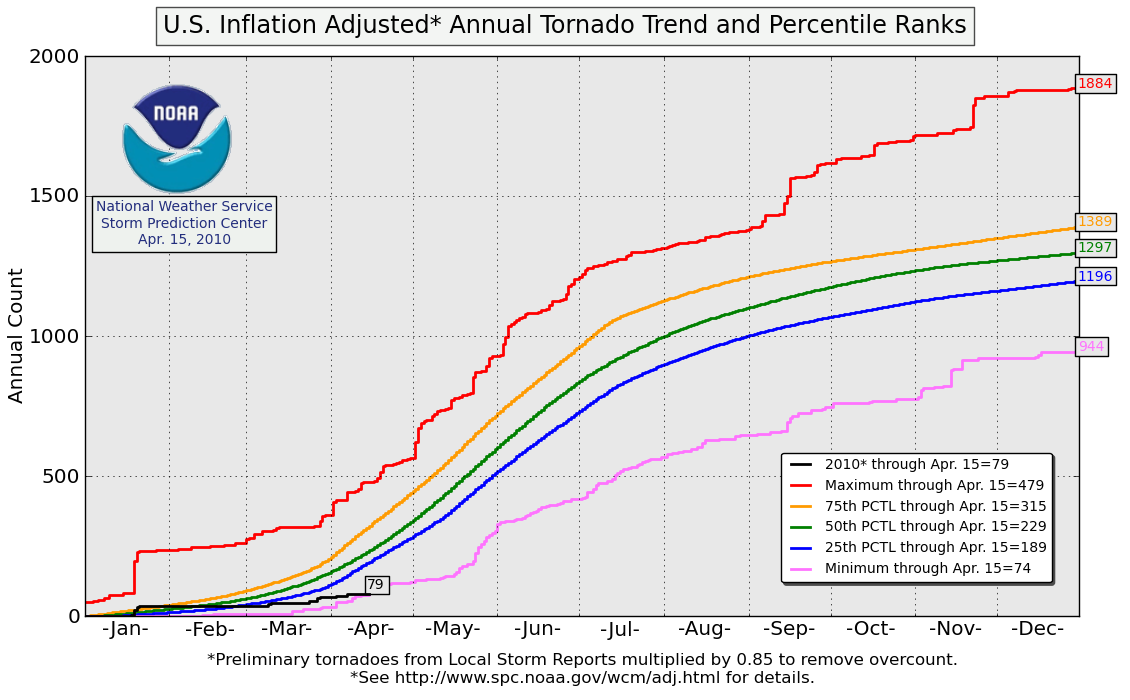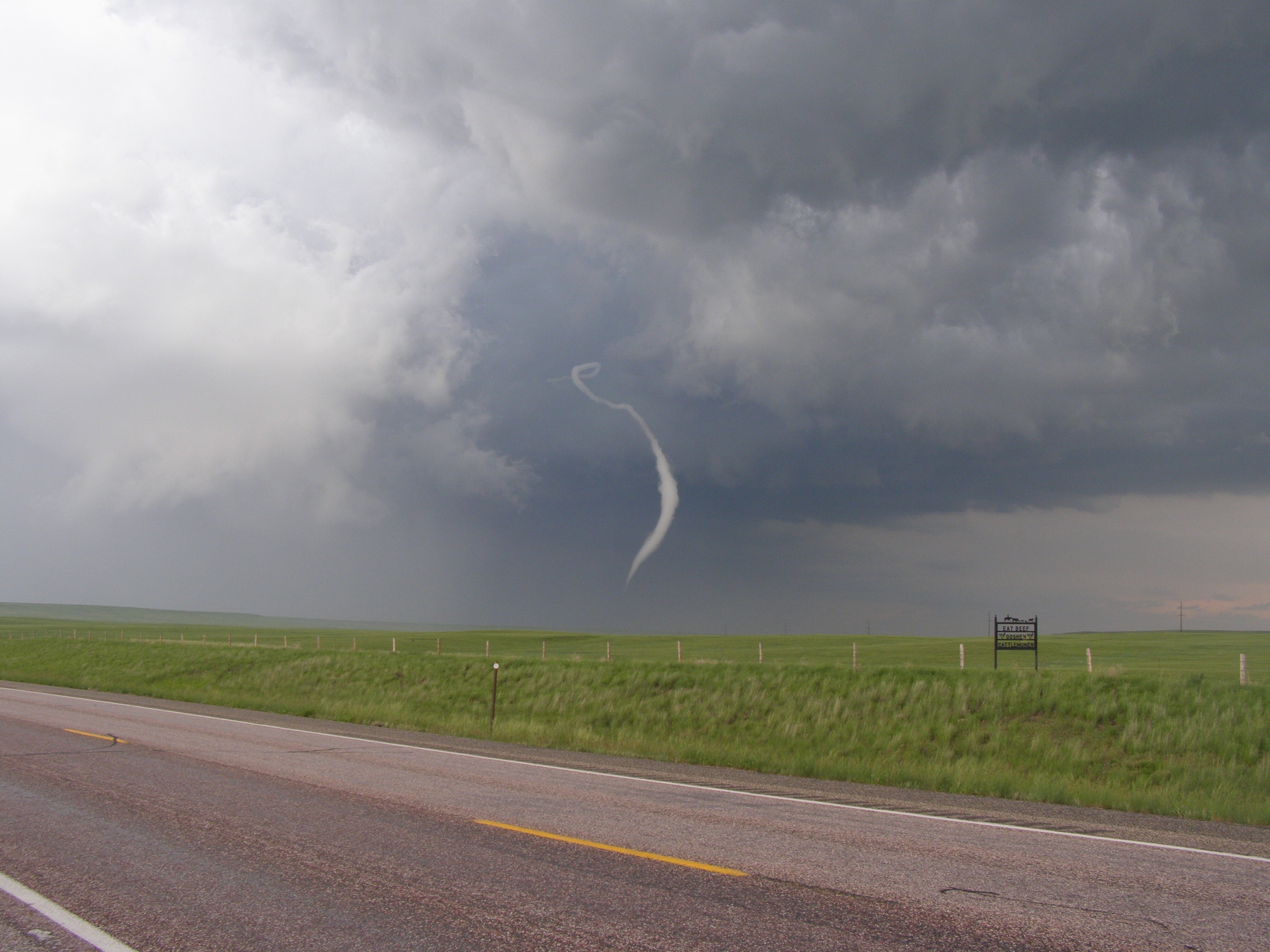The charts below illustrate that occasional weak cool-season links may occur between the phase strength of the EL Niño Southern Oscillation (ENSO phase strength) and EF1 to EF5 tornado reports for bi-monthly periods from 1950 through 2010 (1951 to 2011 for the last pair, Dec-Jan period). The charts display a simple running sum of EF1 to EF5 tornado events over the same bi-monthly periods that are used for the Multi-variate ENSO Index, or MEI, (Wolter, K., and M. S. Timlin, 1998).
The bi-monthly charts on the left show tornado events summed for each period with the years increasing along the positive y-axis. The charts on the right use the same bi-monthly tornado sums for each period but years are re-ordered and ranked based on MEI. The strongest bi-monthly El Niño events are at the top of the y-axis while the strongest La Niña events are at the bottom of the y-axis. Years/months between the two extremes are ENSO neutral, or transition periods between the two phases.
Cook and Schaefer, 2008, found an increase in cool-season tornado events during ENSO cool-phase (La Niña) and this finding is borne out to some extent by the charts for the two bi-monthly periods of Dec-Jan and Jan-Feb. These two overlapping cool-season periods exhibit some correlation between summed tornadoes and MEI with no more than 12 percent of the variance (R2) in the summed tornadoes being accounted for by ENSO phase strength (stronger La Niña ~= more U.S. tornado activity).
The weak connection between ENSO cool-phase strength and more tornadoes is maintained, but to a lesser extent, for the Feb-Mar and Mar-Apr bi-monthly tornado events with R2 values of 6 percent and 10 percent, respectively. All other bi-monthly periods throughout the year show very little or no correlation with ENSO phase strength indicating that there are clearly many other positive and negative influences that modulate tornado activity in the U.S. through most of the year. (The R2, or proportion of variance, value is indicated in the upper left of each chart for each bi-monthly period where the years are ordered by ranked MEI value and is also indicated in the caption for each of these charts.)
It is interesting to note that in a couple of the strongest cool-season El Niño cases (1983 and 1998) tornado events appear to be above average when compared to other cool-season El Niño cases. This is especially true of the strongest El Niño case (based on MEI) of Dec 1982 through Jan 1983 (Dec-Jan right-hand chart below). Thus, a very strong El Niño (ENSO warm phase based on MEI) during the cool season does not necessarily result in weakly suppressed downstream tornado activity in the U.S. but may actually act to support more vigorous larger scale storm systems that, in turn, result in more tornadoes.
For additional information please contact Greg Carbin at SPC.
References:
Wolter, K., and M. S. Timlin, 1998: Measuring the strength of ENSO events – how does 1997/98 rank? Weather, 53, 315-324.
Cook, A.R., and J.T. Schaefer, 2008: The Relation of El Niño – Southern Oscillation (ENSO) to Winter Tornado Outbreaks. Mon. Wea. Rev., 136, 3121-3137.



























